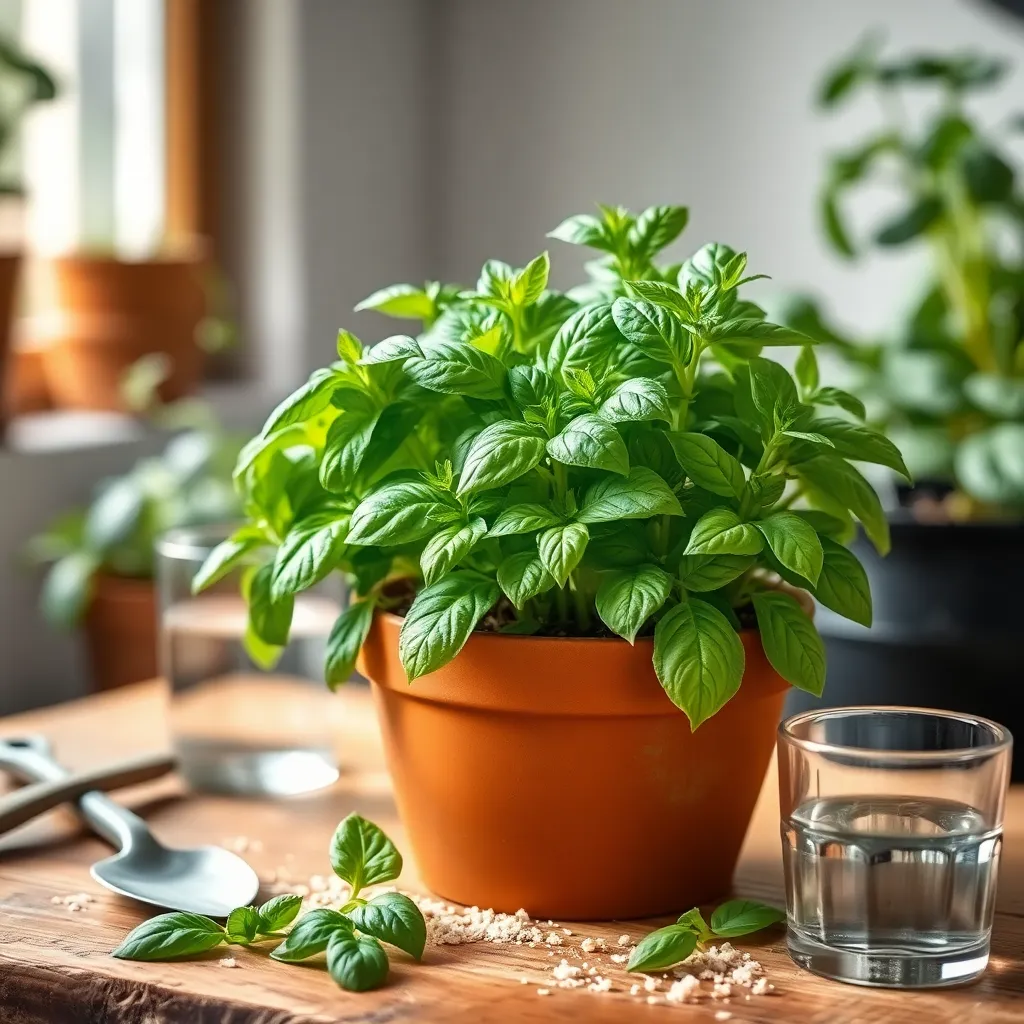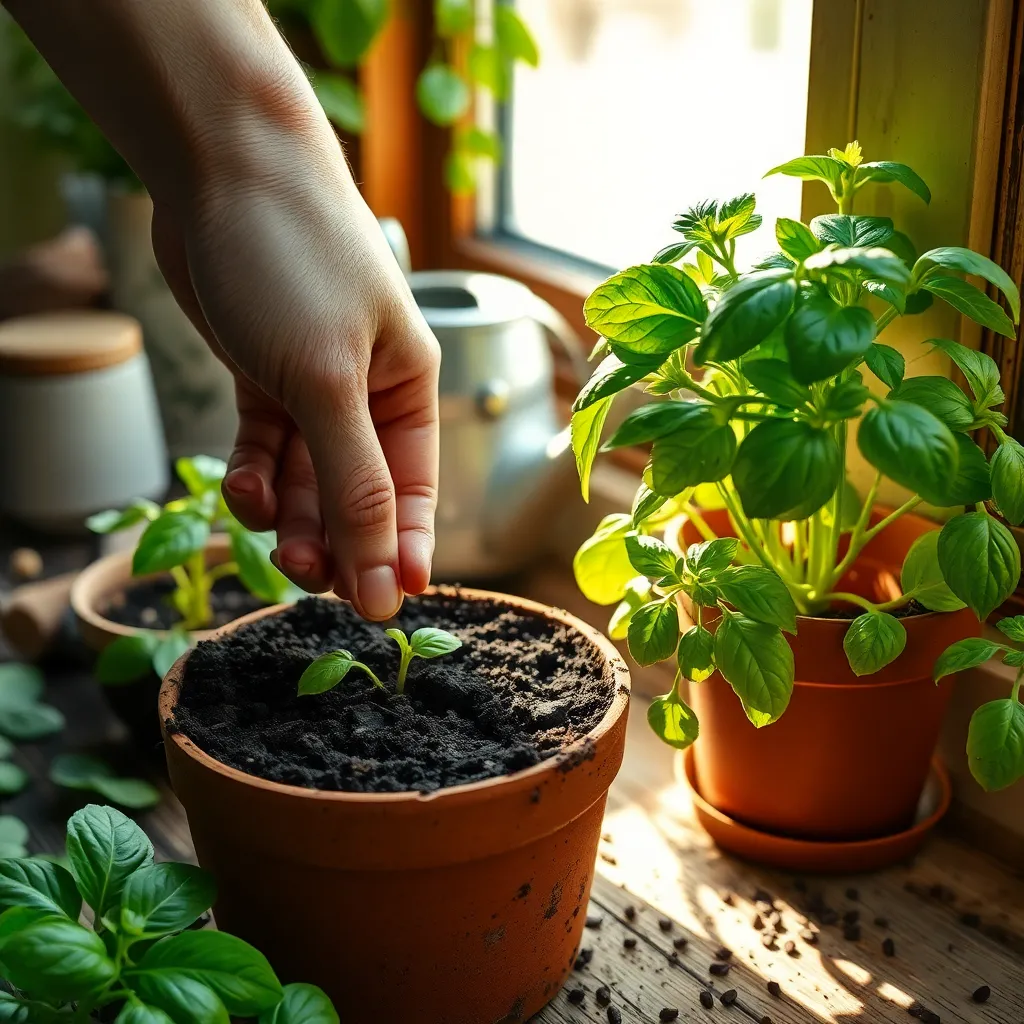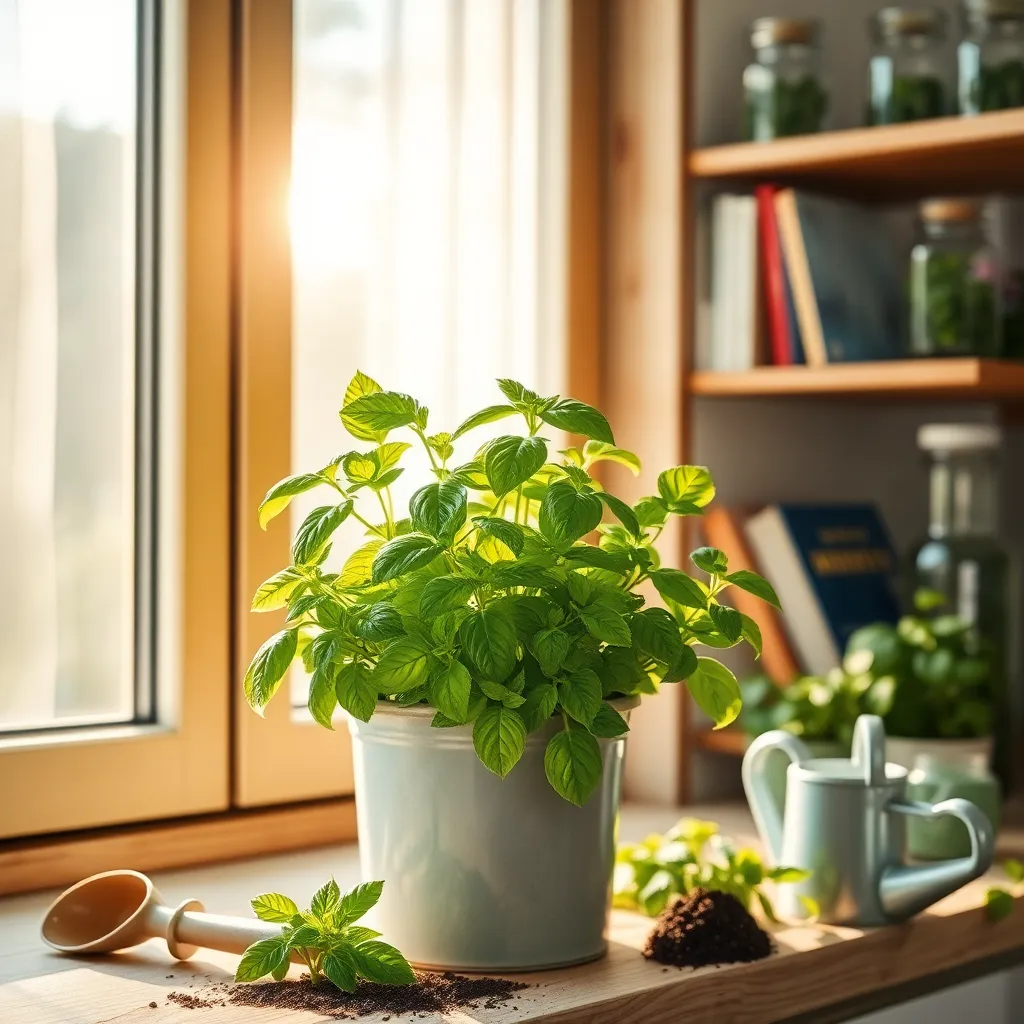There’s something truly magical about nurturing a plant to life, and what better way to start than with sweet basil? Whether you’re a newcomer to the world of indoor gardening or a seasoned green thumb, growing basil indoors can be a delightful and rewarding experience. This aromatic herb, known for its vibrant green leaves and distinctive flavor, can transform your kitchen into a fragrant oasis, all while providing a fresh supply of leaves for your culinary creations.
Understanding the essentials of indoor basil cultivation can make all the difference between a flourishing plant and one that struggles to survive. In this guide, you’ll discover practical tips on everything from selecting the right container to creating the perfect lighting conditions. We’ll delve into watering techniques and the ideal soil mix, ensuring your basil plant thrives in its indoor environment. By the end of this article, you’ll be equipped with the knowledge to grow lush, healthy basil that will not only enhance your dishes but also bring a piece of nature into your home.
Select a Suitable Pot

Choosing the right pot for your sweet basil is crucial to its success indoors. Start by selecting a pot that is at least 6-8 inches deep, which allows the roots ample space to grow.
Consider a pot with drainage holes to prevent water from accumulating at the bottom, which can lead to root rot. If your chosen container doesn’t have drainage, you can add a layer of gravel or small stones at the base to improve drainage.
Material matters when selecting a pot. Clay or terracotta pots are breathable and allow for better moisture regulation, while plastic pots retain moisture longer, which can be beneficial in drier indoor environments.
For those who are more experienced, self-watering pots can be a great option to maintain consistent moisture levels, especially if you’re not home to water frequently. Ensure the pot’s size matches your space and aesthetic preferences, as this will encourage you to take pride in your indoor garden.
Use Well-Draining Potting Mix

To grow sweet basil indoors successfully, it’s crucial to use a well-draining potting mix. This type of soil prevents water from accumulating around the roots, which can lead to root rot—a common issue for indoor basil plants.
For beginners, a pre-mixed potting soil designed for herbs or vegetables is an excellent choice. These mixes are typically light and contain a blend of peat, perlite, and vermiculite, promoting proper drainage and air flow.
Advanced gardeners might consider creating their own potting mix by combining equal parts of peat moss, perlite, and compost. This custom mix ensures that your basil receives the right nutrients while maintaining the necessary drainage characteristics.
Regardless of the mix you choose, make sure your pot has drainage holes to allow excess water to escape. Water your basil when the top inch of soil feels dry to the touch, usually requiring a drink once or twice a week depending on your indoor climate.
Plant Seeds at Correct Depth

When planting sweet basil seeds indoors, it’s essential to plant them at the correct depth to ensure optimal germination. Generally, basil seeds should be sown about 1/4 inch deep, which means they are lightly covered with soil, allowing them to access enough light and moisture.
To achieve the right planting depth, gently press the seeds into the potting mix with your fingertip or the back of a spoon. This practice not only ensures proper seed-to-soil contact but also prevents seeds from being buried too deeply, which can hinder their ability to sprout.
Once the seeds are planted, cover them with a thin layer of soil and mist with water to keep the surface moist but not soggy. Moisture is crucial during the germination phase, so consider using a spray bottle to maintain consistent humidity without disturbing the seeds.
For those with more experience, consider using a humidity dome or a plastic cover to retain moisture and warmth, accelerating germination. Ensure that the seeds are kept at an ideal temperature range of 70-75°F (21-24°C) to promote successful sprouting.
Ensure Adequate Indoor Light

When growing sweet basil indoors, providing adequate light is crucial for its health and flavor. Basil generally requires around six to eight hours of direct sunlight daily for optimal growth.
Position your basil near a south-facing window to ensure it receives enough natural light. If natural light is insufficient, consider using supplemental grow lights to provide the necessary illumination.
LED grow lights are an excellent choice as they are energy-efficient and can be adjusted to provide the specific light spectrum that basil needs. Place the grow lights about 6 to 12 inches above the plant, adjusting the height as the plant grows to avoid leaf burn.
It’s important to rotate the plant every few days to ensure even light exposure and prevent leaning. For advanced gardeners, using a light timer can automate the process, ensuring your basil receives consistent light without needing constant attention.
Maintain Consistent Moisture Levels

Maintaining consistent moisture levels is crucial for growing sweet basil indoors. The key is to keep the soil slightly moist but not waterlogged, as basil is prone to root rot in overly wet conditions.
Using a well-draining potting mix can help achieve the optimal moisture balance. Consider adding some perlite or coarse sand to your potting soil to improve drainage and prevent water from accumulating at the bottom of the pot.
It’s important to check the soil moisture regularly. Insert your finger about an inch into the soil; if it feels dry at this depth, it’s time to water your basil plant.
For beginners, watering once a week is a good starting point, but this can vary depending on your indoor climate. More experienced gardeners might consider using a moisture meter for more precise measurements, especially in fluctuating indoor environments.
Conclusion: Growing Success with These Plants
In nurturing your indoor sweet basil, we’ve explored five pivotal relationship concepts: providing the right environment, understanding needs, consistent care, communication through observation, and patience in growth. Just as sweet basil flourishes with the right conditions, so too do our relationships thrive when we tend to them with understanding and dedication.
As an actionable next step, take a moment to assess the “environment” of your closest relationships. Are they receiving the attention and care needed to flourish? Initiate a small act of kindness or a meaningful conversation today to reinforce those bonds.
Remember, every great relationship is a living, growing entity that requires ongoing nourishment. Bookmark this article now, so you can revisit these nurturing tips whenever your relationships need a little extra love and attention.
Looking forward, envision the success of your relationships as a flourishing garden, rich with growth and connection. With consistent effort and care, you’re on the path to cultivating meaningful, lasting bonds. Embrace this journey with confidence and watch your relationships bloom.
